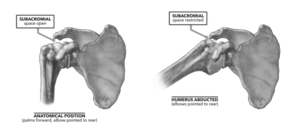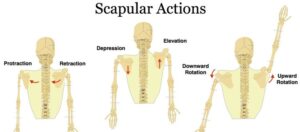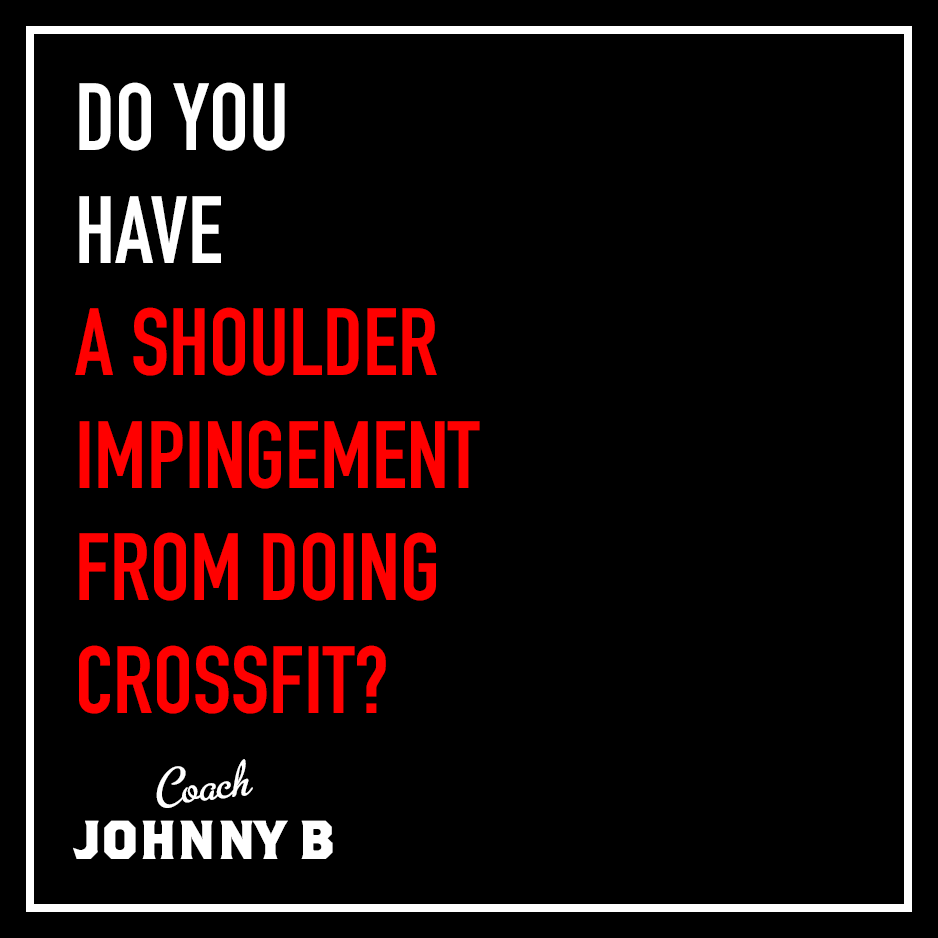Over the last year, I have worked with over 250 different CrossFitters from the Atlanta area in pain. Upon reviewing the data, shoulder issues are the #1 thing I treat—specifically shoulder impingements. If you look at the movements programmed in WODs, it makes sense. All of these involve the shoulder girdle.
- Bench Press
- Burpee (all variations)
- Dips
- Front Squat
- Handstand Push-Up
- KB Swings
- Muscle-Ups
- Overhead Squats
- Pull-up
- Push-up
- Push Press
- Jerks
- Snatches (all variations)
- Strict Press
- Toes To Bar/Knees To Elbow
- Thruster
- Wall Ball
So unless it’s a bike, running, or back squat workout, you are using your shoulder in a CrossFit workout.
To further make this point, an examination of all the workouts from CrossFit.com for the 2013 year revealed that over 80 percent of them involved at least one exercise that had a force transfer through the shoulder girdle.
Therefore, proper function of the shoulder is critical for both optimal performance and injury prevention.
Unfortunately, many CrossFitters do not understand how to properly self-cue during movements and thus set themselves up for an impingement. Many people also have strength imbalances or mobility limitations that compound poor motor control. When 80% of your workouts place a high demand on the shoulder, and you have poor motor control and possibly a mobility issue/strength imbalance, you are going to get an impingement.
Luckily shoulder impingements are not something that you will need surgery for, IF you take are of them early.
So this week, I am offering you a self-diagnostic process to all my fellow CrossFitters out there.
The hope is you can catch the impingement and fix it before it takes you out of the gym.
Before I talk diagnostics, here is a breakdown of shoulder impingement. Skip this section if you do not have the patience for a short, high-level anatomy lesson.

There are several types of shoulder impingement.
External impingement:
External impingement, in short, is when the rotator cuff muscle is trapped under the roof of the shoulder blade as the arm is elevated.
there are two types of external impingement
Primary: related to the shoulder architecture (mostly the acromion shape) and has little to do with movement quality or exercise technique. Outside of an x-ray (and surgery), this is something you’re never really going solve outside of changing your programming to better suit your needs.
Secondary: affected by poor scapular positioning/control, poor thoracic spine mobility or stability, improper exercise technique, rotator cuff weakness, lack of core or hip control, stiff/short lats, inefficient breathing patterns, or overtraining, which is what I am covering in this article.
Internal Impingement: You don’t need to worry about this unless you are a pitcher for a baseball team
How To Assess Your Shoulder Impingement
#1. Do you have shoulder pain during any of these activities of daily living?
Taking your shirt off
Sleeping on the injured arm
Pouring coffee
A wax on wax off style of wiping off a counter/table
#2. Do you have pain during CrossFit when…
a. when doing movements on the rig like kipping pull-ups and toes-to-bar, no pain with pressing overhead, no pain with strict pull-ups.
b. with both jerking overhead and snatching, increased pain with full depth in these positions like a full (squat) clean, (squat) snatch, and overhead squat, pain with dowel pass-throughs and thrusters.

If you answered yes to Questions #1 and 2A, you most likely have a shoulder impingement caused by WEAK scapular depressors.
To fix this, you need to strengthen your pectoralis minor, lower trapezius fibers, subclavius, latissimus dorsi. You also need to start practicing the cues of “grow tall” and “tuck your shoulder blades in your back pocket” when hanging on a pull-up bar, rings, and during rowing. Lastly, you also need to do some soft tissue work on scapular elevators to allow the depressors to activate fully.
If you answered yes to Questions #1 and 2B, you most likely have a shoulder impingement caused by WEAK scapular upward rotators.
To fix weak scapular upward rotators, you need to strengthen the middle and lower serratus anterior and upper and lower trapezius muscles. You also need to start practicing the cue of ” shrug up” when you jerk, snatch, or have weight overhead. Lastly, you also need to do some soft tissue work on scapular retractors to allow the serratus and upper/lower traps to activate entirely.
If you answered yes to Questions #1, 2A & 2B, you need some help from a really smart coach or medical professional like a PT, ATC or rehab-focused Chiropractor.
The moral of the story is this:
- If you do CrossFit you are eventually going to have some shoulder pain
- Shoulder pain does not mean you are injured. It’s your body asking you to make a change.
- Often the change you need to make is with cueing and strength work.

